-
Young engineers compete in underwater robotics race
Student-built autonomous underwater vehicles will speed through the depths of a Navy pool in a battle for supremacy at the 16th International RoboSub Competition. The competition is being held this week (22-28 July). In addition to building autonomous underwater vehicles, teams are also responsible for creating Web sites and writing journal papers that outline their work.
-
-
U.K. water industry: fracking may contaminate U.K. drinking water
U.K. water companies have warned the shale gas industry that the quality of U.K. drinking water must be protected at all costs and fracking must not harm public health. Shale gas fracking could lead to contamination of the water supply with methane gas and harmful chemicals if not carefully planned and carried out.
-
-
Spending on cybersecurity for critical infrastructure to reach $46 billion by end of 2013
The digitization of critical infrastructures has provided substantial benefits — improved productivity, better connectivity, greater efficiencies. Yet this digitization also carries significant risks. Always-on Internet connectivity has ushered in a new cyber-age in which the stakes are higher. Better to shield critical infrastructure, cyber security spending for critical infrastructure protection will hit $46 billion globally by the end of 2013.
-
-
More crude oil delivered to U.S. refineries by rail, truck, and barge
The use of rail, truck, and barge to deliver crude oil to refineries has increased, in part due to increases in U.S. crude oil production. Refinery receipts of crude by truck, rail, and barge remain a small percentage of total receipts, but the U.S. Energy Information Administration (EIA) notes that refineries across the nation received more than one million barrels per day (bbl/d) by rail, truck, and barge in 2012, a 57 percent increase from 2011.
-
-
130-year old seawall protected New Jersey town from Sandy's storm surges
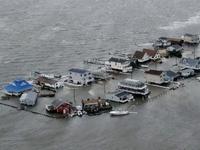
Bay Head and Mantoloking sit side-by-side in Ocean County, facing the ocean. In Bay Head, Sandy flooded 88 percent of the oceanfront homes, with just one oceanfront home destroyed. In Mantoloking, more than half of the oceanfront homes were damaged or destroyed. The reason for the difference between minor structural impacts and widespread destruction: a relatively small coastal obstacle — a forgotten, 1,260-meter seawall, built in 1882 and buried beneath the beach – which reduced potential wave loads by a factor of two.
-
-
Dealing with man-made earthquakes
Between 1967 and 2000, central and eastern United States experienced on average 20 earthquakes above a magnitude 3.0 a year. Between 2010 and 2012, the number of earthquakes above a magnitude 3.0 in these regions has dramatically increased to an average of 100 a year. This increase in earthquakes prompts two important questions: Are they natural, or man-made? And what should be done in the future as we address the causes and consequences of these events to reduce associated risks?
-
-
Crawling robot examines, evaluates condition of load-bearing cables
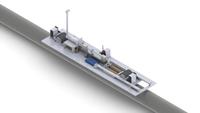
Severe weather events inflict damage and destruction. The condition of infrastructure and its components may contribute to the overall damage: weak components and damaged elements make infrastructure less likely to withstand the stress of a storm. Researchers have developed a crawling robot capable of examining and evaluating the condition of load-bearing cables, such as those found in bridges, elevators, and cable cars.
-
-
Mother Nature offers best protection for coastal communities’ infrastructure
Extreme weather, sea-level rise, and degraded coastal ecosystems are placing people and property at greater risk of damage from coastal hazards. The likelihood and magnitude of losses can be reduced by intact ecosystems near vulnerable coastal communities. Scientists say that natural habitats such as dunes and reefs are critical to protecting millions of U.S. residents and billions of dollars in property from coastal storms.
-
-
Concrete recycling robot disassembles concrete structures for recycling, reuse
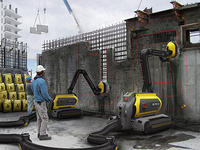
Current concrete-demolition techniques require a lot of power crushing, separation, and machinery, not to mention the fact that they waste a lot of water in order to prevent dust blooms during operation. A new concrete recycling robot is designed efficiently to disassemble concrete structures without any waste, dust, or separation and enable reclaimed building materials to be reused for new prefabricated concrete buildings. It does so by using a water jet to crack the concrete surface, separate the waste, and package the cleaned, dust-free material.
-
-
Climate change, severe weather threaten U.S. energy sector: Dept. of Energy
The U.S. entire energy system is vulnerable to increasingly severe and costly weather events driven by climate change, according to a U.S. Department of Energy report published last week. These climate and weather trends — increasing temperatures, decreasing water availability, more intense storm events, and sea level rise — each independently, and in some cases in combination, could restrict the supply of secure, sustainable, and affordable energy critical to U.S. economic growth.
-
-
U.S. power plants use more coal, bucking the trend toward natural gas
Power plants in the United States are burning more coal to produce electricity, bucking the trend toward using natural gas, and in the process emitting more greenhouse gasses into the atmosphere, a new government report says. Burning coal to produce electricity was popular just a few years ago, but hydraulic fracturing led to a natural gas boom, driving down gas prices and making natural gas more competitive with coal. The demand for natural gas got so high, however, that its price began to creep up at the same time that the price of coal dropped because of weakening demand for it.
-
-
Japan to restart nuclear power plants
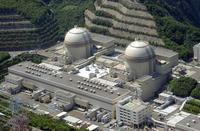
Japan’s fifty nuclear power plants were taken off-line in the wake of the 2011 Fukushima nuclear disaster, but the government Prime Minister Shinzo Abe, which took office in December, said it was planning to restart Japan’s nuclear power generation program.
-
-
Quebec deadly accident revives pipeline vs. rail debate
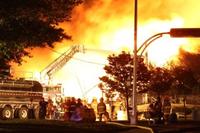
The sharp increase in U.S. domestic oil production in the last four years, and the opening by the Obama administration of new areas for drilling, have greatly benefitted U.S. rail companies, which now enjoy the added business of transporting oil from places where pipelines do not exist.U.S. domestic shipments of oil have increased from 9,500 carloads in 2008 to more than 230,000 carloads last year. The deadly Lac-Megantic, Quebec crude-oil train accident revives the debate about the relative safety merits of two modes of transporting oil over long distances – rail vs. pipeline. Proponents of the Keystone XL pipeline project say the Quebec accident will boost support for their cause.
-
-
Using crowdsourcing for earthquake monitoring
The U.S. Geological Survey (USGS) and other scientific institutions are using social media and crowdsourcing to learn more about earthquakes, according to a new report. These techniques provide inexpensive and rapid data to augment and extend the capabilities provided by traditional monitoring techniques.
-
-
“Peak oil” concerns should ease: study

Fears of depleting the Earth’s supply of oil are unwarranted, according to new research, which concludes that the demand for oil — as opposed to the supply — will reach its own peak and then decline. “Peak oil” prognosticators have painted pictures of everything from a calm development of alternatives to calamitous shortages, panic and even social collapse as the world reaches its peak of oil production – and then supplies fall.
-
More headlines
The long view
Water Wars: A Historic Agreement Between Mexico and US Is Ramping Up Border Tension
As climate change drives rising temperatures and changes in rainfall, Mexico and the US are in the middle of a conflict over water, putting an additional strain on their relationship. Partly due to constant droughts, Mexico has struggled to maintain its water deliveries for much of the last 25 years, deliveries to which it is obligated by a 1944 water-sharing agreement between the two countries.
Trump Is Fast-Tracking New Coal Mines — Even When They Don’t Make Economic Sense
In Appalachian Tennessee, mines shut down and couldn’t pay their debts. Now a new one is opening under the guise of an “energy emergency.”
Smaller Nuclear Reactors Spark Renewed Interest in a Once-Shunned Energy Source
In the past two years, half the states have taken action to promote nuclear power, from creating nuclear task forces to integrating nuclear into long-term energy plans.
Keeping the Lights on with Nuclear Waste: Radiochemistry Transforms Nuclear Waste into Strategic Materials
How UNLV radiochemistry is pioneering the future of energy in the Southwest by salvaging strategic materials from nuclear dumps –and making it safe.
Model Predicts Long-Term Effects of Nuclear Waste on Underground Disposal Systems
The simulations matched results from an underground lab experiment in Switzerland, suggesting modeling could be used to validate the safety of nuclear disposal sites.
